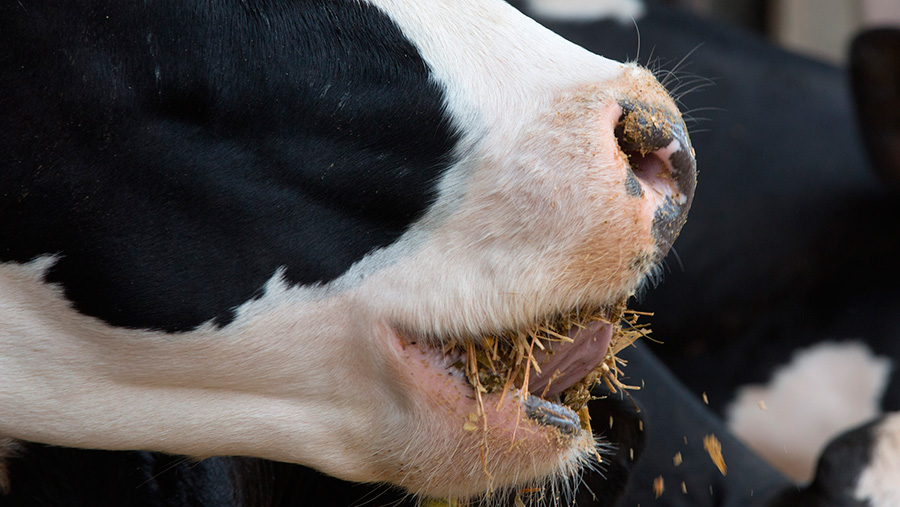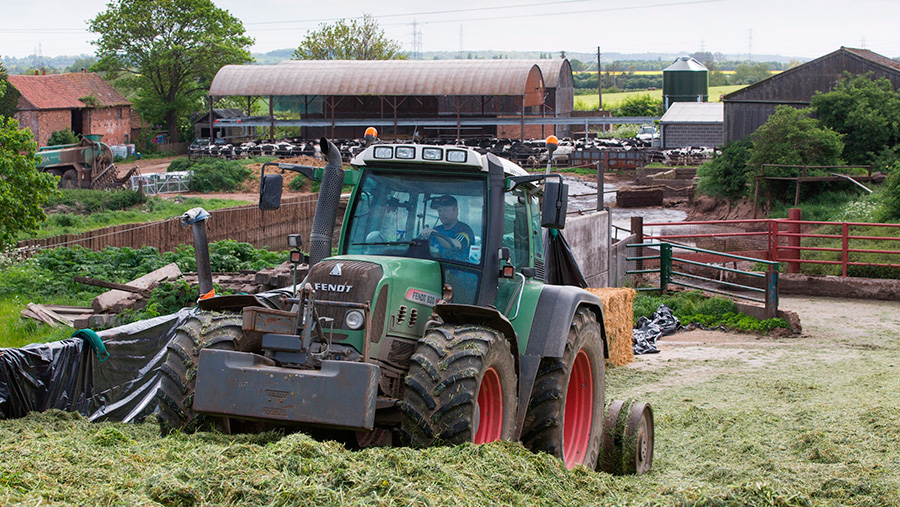Livestock Event 2016: Early silage results show lower first-cut energy levels
 © Tim Scrivener
© Tim Scrivener A mild winter and a cold spring has led to lower metabolisable energy (ME) levels due to increased first-cut grass maturity.
This is according to Trouw Nutrition’s Silage Watch analysis of 850 farms, which averaged an ME of 10.8MJ/kg DM.
See also: 8 tips to stop spoilage in your silage
The overall picture shows quality similar to last year, but there were fewer high-quality samples, explained Trouw Nutrition ruminant specialist Tom Goatman.
However, he told delegates at the Livestock Event the neutral detergent fibre (NDF) levels were higher, crops were drier at 31.2% DM and intake was similar.
“This suggests cows should be keen to eat reasonable quantities,” said Mr Goatman.
Furthermore, he said total fermentable carbohydrate (TFC) had increased, meaning there was more fibre available for digestion in the rumen.
“More stem and structure will help support rumen health and, although NDF is higher this year, more fibre should be available for digestion,” he added.
He noted a slight pH life but there has been a big drop in lactic acid, slipping from 62.6g/kg DM to 46.9g/kg DM.
“It may be worth looking at pH as our analysis shows levels may not be low enough to inhibit spoilage organisms.
“Sheer grabs can be used to keep a clean face when feeding out and this could be helpful on wide clamps to help get through it quickly each week.”

© Tim Scrivener
Compaction: The cheap way of minimising clamp losses
Improving grass compaction is an easy and cheap way farmers can minimise clamp losses, advises Dave Davies of Silage Solutions.
Calculating grass compaction can therefore be a very valuable skill farmers should have at their disposal.
See also: 5-step guide to reducing silage losses
- Take the time to compact layers properly
- Layer depth should be 15cm
- Layer depths of 25cm can only be used when grass DM is low for example less than 25%
- Silage compactors are a worthwhile investment.
With a simple steel tube sharpened at the end with an angle grinder, a core sample can be taken, with Dr Davies recommending farmers asses their own compaction to minimise forage losses.
“Optimal compaction is about 750kg per cubic metre on a fresh weight basis,” he told Farmers Weekly.
“On a dry matter basis after laboratory analysis it is 250kg and weight is an indicator of density and density is key to aerobic stability. I’ve been on farms where there can be a four-fold difference in density in the same clamp.”
To figure out freshweight density you need to:
- Make a hole with a corer
- Weigh the silage from the hole
- Divide the weight by the volume of the hole
- Measure in metres and kilograms so there is no need to convert
- Volume of hole is pi multiplied by the radius squared, multipied by the depth of the hole.
“Silage losses are costing UK farmers a large amount of money,” he added.
“About 20-30% losses can be seen between filling a clamp and feeding. We can reduce this but we’ll never get to zero losses – the solutions do not cost a lot of money.”
He said silage density can vary hugely, recommending farmers invest in a simple silage compactor to compact layers of grass at no more than 15cm deep, unless grass is low in DM (22%), when 25cm layer depths are advisable.
